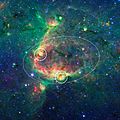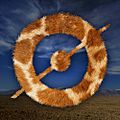Citizen science facts for kids
Citizen science is a cool way for everyday people to help real scientists learn more about our world. It's like being a detective for science! Usually, citizen scientists collect information, like photos or observations, and then send it to a team of experts. These scientists then look at and use the information. Most people who do citizen science are volunteers, meaning they don't get paid for their awesome help.
Sometimes, scientists ask for help from people who are already collecting information. For example, if scientists are studying birds, they might ask birdwatchers to write down which birds they see and hear. Then, they share this information with the scientists. The National Audubon Society has been doing a Christmas Bird Count since 1900!
Smartphones and GPS have made citizen science much easier. It's also easier for scientists to ask for and use the information. For example, in a program called FrogWatch USA, citizen scientists go to places where frogs live. They use their phones to record the sounds the frogs make.
Not all citizen science programs mean going outside. In a project called EyeWire, volunteers visit a website and click on things they see. This helps scientists understand how our brains work with what our eyes see.
In other citizen science projects, volunteers might:
- Measure temperature to track climate change.
- Tell scientists when different plants start to grow in the spring.
- Search for aliens in space.
- Design better bicycle routes for their towns.
Related pages
Images for kids
-
Scanning the cliffs near Logan Pass for mountain goats as part of the Glacier National Park Citizen Science Program
-
Members of the Cascades Butterfly Citizen Science Team pictured on Sauk mountain
-
Amateur astronomers can build their own equipment and can hold star parties and gatherings, such as Stellafane.
-
Citizen Science Center exhibit in the Nature Research Center wing of the North Carolina Museum of Natural Sciences
-
Plastic pollution in Madagascar
-
Snapshot Serengeti classifies animals at the Serengeti National Park in Tanzania.
See also
 In Spanish: Ciencia ciudadana para niños
In Spanish: Ciencia ciudadana para niños












